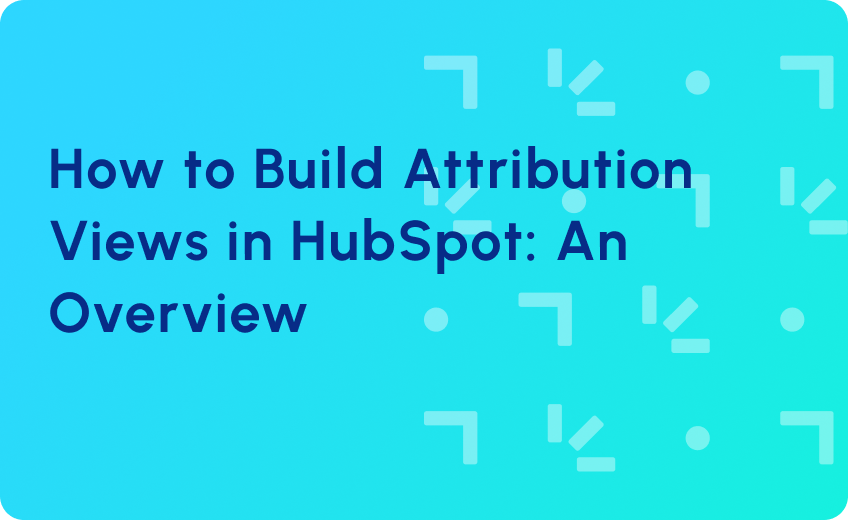
Fix HubSpot Salesforce Sync for Reporting Clarity
You’ve connected HubSpot and Salesforce. Leads are syncing, records are flowing.
But… the data is a mess.
Marketing says MQLs are up. Sales disagrees. HubSpot attribution doesn’t match the Salesforce pipeline. You’re spending hours reconciling reports that should have been automatic.
The culprit isn’t the platforms. It’s the HubSpot Salesforce sync setup.
This is a RevOps problem. And the solution lies in rethinking your HubSpot Salesforce sync as a strategic engine powering your revenue funnel.
1. Start With Data Ownership and Lifecycle Alignment
Before syncing a single field, define who owns what:
- HubSpot: Lead gen, lifecycle stage tracking, behavior-based engagement, and marketing attribution
- Salesforce: Lead qualification, deal stages, revenue reporting, and post-sale workflows
Why this matters: Without clarity, fields like “Lifecycle Stage” or “Lead Status” get overwritten or pushed backwards. This kills funnel visibility.
But have you noticed that lifecycle stages get stuck or reset in HubSpot? This usually happens when Salesforce is also allowed to edit them. So, ownership must be assigned clearly: HubSpot through SQL and Salesforce from Opportunity onwards.
2. Map Fields Intentionally (Not All Fields Should Sync)
Every field you sync creates risk. So, before enabling sync:
- Audit existing fields: What’s required by both systems?
- Match picklist values exactly.
- Avoid syncing sensitive or calculated fields unless truly needed.
- Use custom fields like “Salesforce Sync Status” to track sync logic safely.
This is where expert HubSpot Salesforce field mapping can improve your setup. On the other hand, one mismatch can flood your CRM with junk or errors.
But there are some fields that should never be synced, like internal notes, automation-only fields, or test properties. You’ve to keep Salesforce lean.
3. Filter the Right Leads Into Salesforce
Syncing everyone bloats your Salesforce instance, slows down sales, and drives up API calls. Instead:
- Sync only MQLs or SQLs, not cold leads or newsletter signups.
- Exclude test leads, junk domains, and incomplete records.
- Set custom sync triggers in HubSpot to avoid accidental pushes.
This step alone improves routing speed and keeps lead quality high, critical for HubSpot to Salesforce lead routing.
4. Build a Unified Lifecycle Model
To align marketing and sales around revenue, build a shared lifecycle model with:
- Standardized definitions for stages like MQL, SQL, SAL, and Opp
- One-way syncs to prevent update loops
- Automation in HubSpot (workflows) and Salesforce (process builders or Flow) to govern transitions
This enables consistent Salesforce and HubSpot lifecycle sync, giving you the foundation for scalable RevOps.
5. Align Reporting With Shared Metrics
Now that your HubSpot Salesforce sync is clean, it’s time to measure performance.
Set up dashboards that combine:
In HubSpot:
- Attribution by source and asset
- Funnel velocity by lifecycle
- Campaign performance
In Salesforce:
- MQL to Opportunity conversion
- Opportunity influenced by marketing
- Revenue by first-touch or multi-touch
When both systems tell the same story, HubSpot attribution reporting becomes more reliable and full-funnel reporting in HubSpot and Salesforce starts driving decisions.
6. Create a Sync Health Routine
Your HubSpot Salesforce integration for RevOps can break silently until they cause chaos. So, avoid that with:
- A quarterly HubSpot Salesforce sync audit: failed records, field errors, and permissions
- Version control: document changes to sync rules or mappings
- A governance process for any new field, user, or lead source
This way, you’ll decrease sudden sync issues and keep both systems working in harmony.
Don’t DIY the Sync. Optimize It for RevOps
You don’t need another quick integration. You need a HubSpot Salesforce integration for RevOps, built for clarity, speed, and closed-loop visibility.
That’s what we do.
Our HubSpot RevOps consulting team specializes in clean handoffs, sync logic, lifecycle design, and reporting that actually helps you scale. Whether you’re starting fresh or cleaning up a messy setup, we turn HubSpot + Salesforce into a true revenue engine.
Ready to fix your sync? Let’s build a lifecycle-aligned, reporting-ready, sales-friendly integration, one that your entire GTM team can trust.




